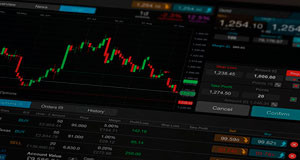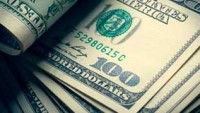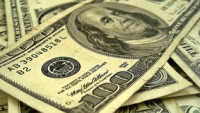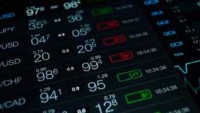 A theme of lower rates for long is helping setup European markets for a higher open on Monday. Chief Japanese central banker Kuroda’s suggestion overnight that there is “ample room” for further rate cuts has added to the sense that central banks will continue to backstop asset prices. The comments come after US unemployment figures released on Friday meant the Federal Reserve will probably refrain from raising rates at its September meeting.
A theme of lower rates for long is helping setup European markets for a higher open on Monday. Chief Japanese central banker Kuroda’s suggestion overnight that there is “ample room” for further rate cuts has added to the sense that central banks will continue to backstop asset prices. The comments come after US unemployment figures released on Friday meant the Federal Reserve will probably refrain from raising rates at its September meeting.
The G20 doesn’t look like it will throw up any stingers for global markets. Political leaders are focusing on trying to achieve “inclusive” globalisation in order to fend-off a popular uprising against a global system that has seen wealth inequality widen.
European stocks reacted well to the US labour market data with most indices gaining over 1.5% on Friday and finishing the week higher. Low volatility is still the order of the day in US stock markets with indices finished the week narrowly higher with gains under 0.5% after Friday’s NFP result.
Afternoon trading activity will likely slow this afternoon with US stock markets closed to celebrate the Labour Day holiday.
The late US dollar strength after the weak unemployment report caught some market participants by surprise on Friday. The unemployment report missed across the board but the average monthly job gain over the past three months is still a respectable 232k.
The unemployment report was not weak enough to completely undermine the Fed’s hawkish bias since Jackson Hole. It was probably enough to see fence-sitters on the FOMC wait until the December before voting to hike interest rates. There are a number of Fed speakers scheduled this week, which with a stronger set of results could have been used to lay the groundwork for September rate hike, but are unlikely to do so now. Rather than making a move in September, it is more likely now that the September statement will be used as the springboard for raising rates after the election.
It should be considered however that the bar is getting lower bar for job creation to keep unemployment rate close to its “full” level. The reason the Fed is unlikely to move in September is because markets don’t expect it. The Fed’s obsession with “financial tightening” means it will likely wait until the better odds according to the market in December.
The US economic calendar is thinner this week with the Fed’s beige book and the ISM non-manufacturing PMIs (After disappointing manufacturing PMI) in focus as well as a few scheduled speeches by FOMC members.
The European Central Bank would ordinarily be the biggest event risk this week but ECB president Mario Draghi has stepped back from the limelight over past few meetings as current policies are given time to take hold (or not, as the case may be). The ECB isn’t likely to take action or hint at action until the allotment results of the second TLTRO II auctions on 22 September.
Sterling shorts are getting squeezed by economic data which continues to defy the doom-laden post-Brexit narrative. After the strong rebound in the manufacturing PMI reading, expectations have risen ahead of today’s service sector survey results. Of key interest will be how much the decline in the currency played its part for manufacturing. It was not just a currency effect, but also renewed confidence, helped in part by the political stability brought about by the swift installation of Therea May as Prime Minister that helped manufacturing recover.
In July, the PMI service index dumped to 47.4, the lowest since the financial crisis. It was the indication of a significant economic slowdown from the services PMI in July that persuaded the Bank of England to aggressively ease policy in August. The general expectation is for a rebound in August in line with other indicators like the Gfk consumer confidence. If business confidence in the resiliency of the UK economy was the main driver of the turnaround in manufacturing, and not just the devalued currency, then there is scope for another big upward surprise in today’s services PMI.
If the UKs service sector returns to expansion, the Bank of England’s Mark Carney, Jon Cunliffe, Kristin Forbes and Ian McCafferty will have a difficult time justifying their latest policy action at a hearing of the Parliament’s Treasury Committee on Wednesday.
EURUSD – The sharp pullback from aforementioned resistance at 1.1245 suggests euro is dropping from the top of its trading range near 1.14 towards the bottom at 1.09. Potential resistance from 1.1245 again then 1.1340 with possible support at 1.1130 then 1.1045.
GBPUSD – Sterling is uptrending with a long wick on Friday’s candle showing some exhaustion. Possible resistance at 1.3370 then 1.3480 with possible support at 1.3280 then 1.32.
EURGBP – The euro Sterling pair has closed below 0.84 suggesting a continuation of the triangle breakout downwards. Potential support near 0.8340 then 0.8250 with resistance now 0.8485.
USDJPY – Dollar yen has overcome bearish evening star candle pattern with close above 104, confirming the break of long-term down-trendline. Support could come in at 102.80 with possible resistance at 105 then 105.70












